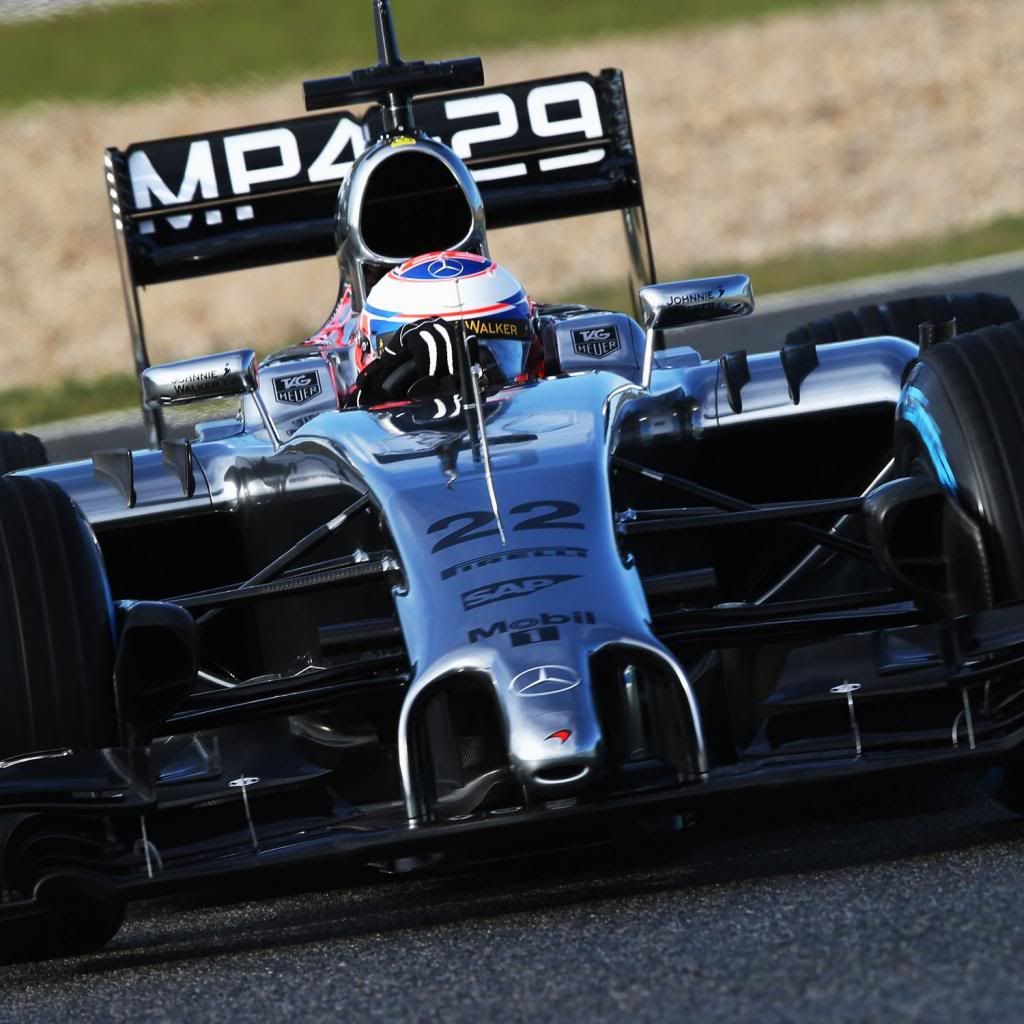During the race... plausably... (numbers of course made up).alelanza wrote:Sorry i'm still not there with you. Are you saying the RBs would be drag limited at 240 km/h?
- Login or Register
No account yet? Sign up
During the race... plausably... (numbers of course made up).alelanza wrote:Sorry i'm still not there with you. Are you saying the RBs would be drag limited at 240 km/h?
Q: Ferrari’s Fernando Alonso seems to be your favoured opponent. You’ve kept him behind your Renault twice now…
VP: No, that’s not fair. That’s racing - I have been quicker than himat just two races. But for sure, in the future, we will have big fights. You can be sure about that.

Ok, make that fast exhaust gasesShrieker wrote: I never looked at it that way. Now thinking, hot exhaust gases blowing towards the ground - in front of the rear wheels- really might give an advantage !

I think at the end of it it'll still balance out, and I don't think there really is a corner where you have so much downforce that you're drag limited. That would just mean the driver is rubbish at setup Also, bear in mind that it seems Macca has a more effective DRS. Their speed differences with/without DRS are greater than RBR's, so RBR would lose less in terms of drag-efficiencybeelsebob wrote:I'm wondering slightly if my use of an example corner and example speeds is confusing the issue – clearly I've not explained my assertion very clearly.
Basically – If there exists a turn such that with DRS both on and off red bull are limited by drag; but McLaren are limited by drag with DRS closed, but limited by downforce with DRS open, then during the race, the difference in lap time will be smaller than during qualifying, due to red bull being slowed by closing the DRS, but McLaren not being slowed (because they were limited by downforce anyway).

=D> nice debunking of an ill considered speculationmyurr wrote:It takes approximately 2,595,880 Joules of energy to evaporate 1 litre of water. F1 rain tyres can displace 60 litres of water per second, which sometimes isn't enough in wet races and they aquaplane. So in order for the exhaust to evaporate that much water it must impart 155,752,800 Joules of energy per second into the water on the track. That's 156 Megawatts of power assuming 100% efficiency....CyleB wrote:but as the track starts to dry it should help, being that almost all of the cars have the exhaust blowing on the difuser
That exhaust is not going to have any measurable effect on the water reaching the rear tyres.
OK yeah i get you now, so basically we're talking about a section that is a curve for a McLaren but only a bend for RB, effectively allowing RB to use DRS during more meters in quali than other teams, and that advantage is gone during the race. And while there may not be a particular corner that fits that description, really you could say this applies to every corner out there in the sense that RB may be able to get on the DRS quicker out of corners than other teams during quali/FPs. And if they're feeling brave they may stay on DRS longer prior to a corner. SOmething in the back of my brain says there's something wrong behind this reasoning but i can't find what it is, so unless someone else indicates otherwise I think you've made a very good point.beelsebob wrote:I'm wondering slightly if my use of an example corner and example speeds is confusing the issue – clearly I've not explained my assertion very clearly.
Basically – If there exists a turn such that with DRS both on and off red bull are limited by drag; but McLaren are limited by drag with DRS closed, but limited by downforce with DRS open, then during the race, the difference in lap time will be smaller than during qualifying, due to red bull being slowed by closing the DRS, but McLaren not being slowed (because they were limited by downforce anyway).


An unseemly display of Schadenfreude there WB...?WhiteBlue wrote:=D> nice debunking of an ill considered speculationmyurr wrote:It takes approximately 2,595,880 Joules of energy to evaporate 1 litre of water. F1 rain tyres can displace 60 litres of water per second, which sometimes isn't enough in wet races and they aquaplane. So in order for the exhaust to evaporate that much water it must impart 155,752,800 Joules of energy per second into the water on the track. That's 156 Megawatts of power assuming 100% efficiency....CyleB wrote:but as the track starts to dry it should help, being that almost all of the cars have the exhaust blowing on the difuser
That exhaust is not going to have any measurable effect on the water reaching the rear tyres.

No, just pleasure to see someone use his head.Just_a_fan wrote:An unseemly display of Schadenfreude there WB...?WhiteBlue wrote:=D> nice debunking of an ill considered speculationmyurr wrote:It takes approximately 2,595,880 Joules of energy to evaporate 1 litre of water. F1 rain tyres can displace 60 litres of water per second, which sometimes isn't enough in wet races and they aquaplane. So in order for the exhaust to evaporate that much water it must impart 155,752,800 Joules of energy per second into the water on the track. That's 156 Megawatts of power assuming 100% efficiency....
That exhaust is not going to have any measurable effect on the water reaching the rear tyres.

